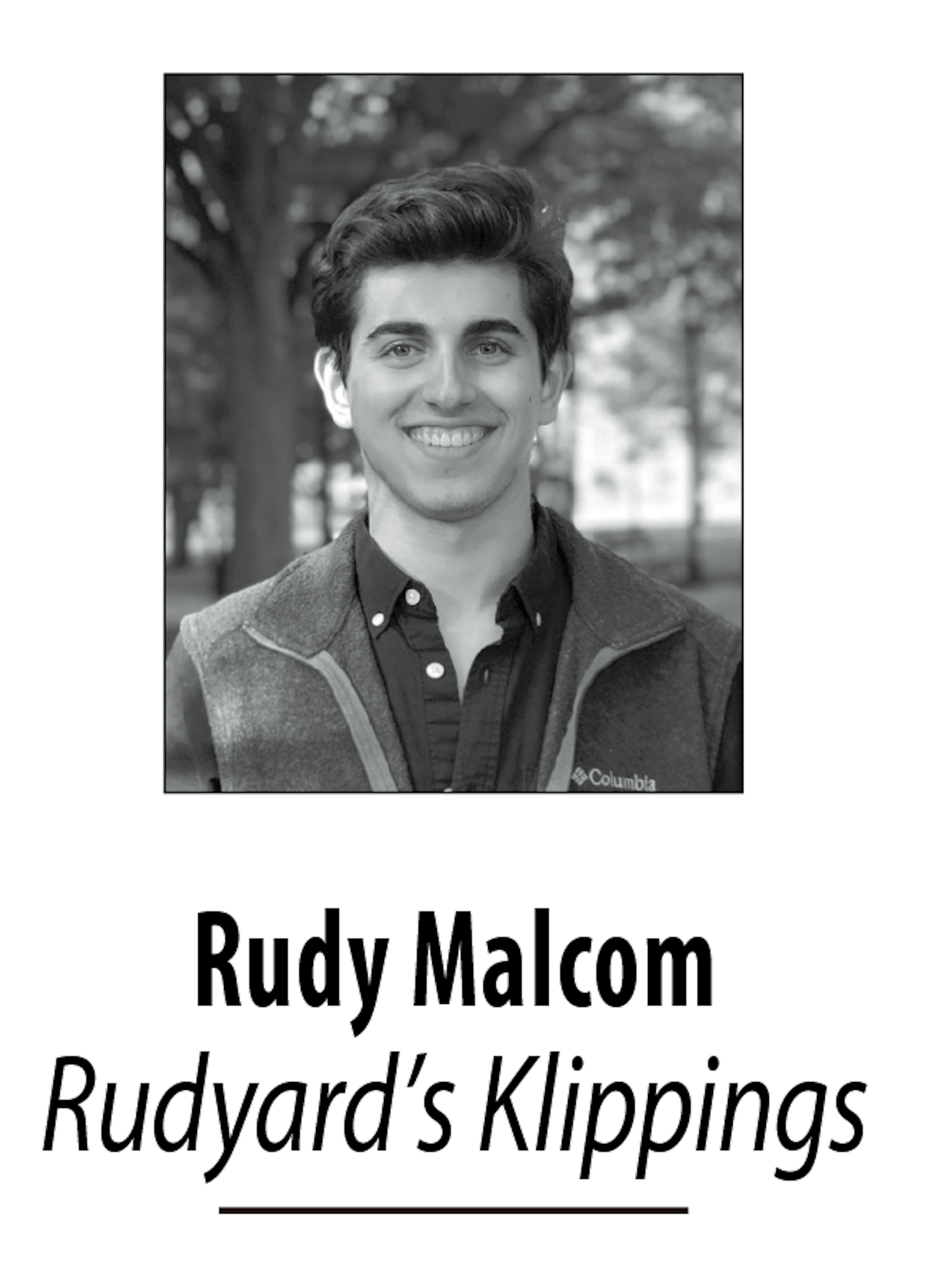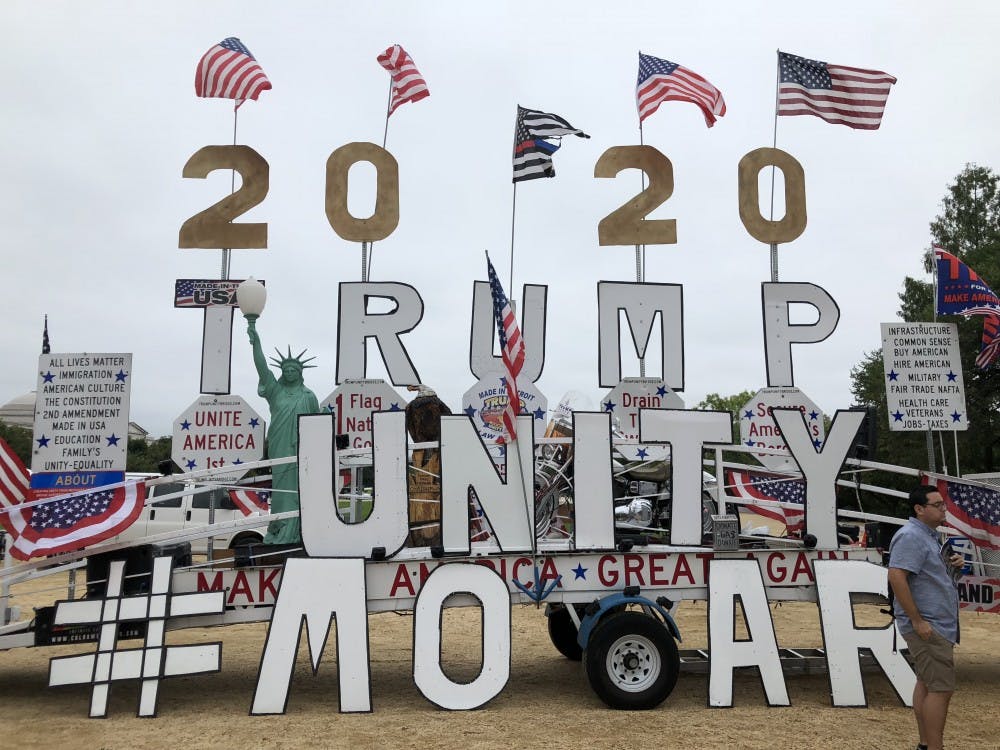
I’m liberal, yet I recently went to the pro-Trump Mother Of All Rallies (MOAR). I’m gay, yet I recently went to a rally where many of the attendees supported a president whose statements and actions have consistently attacked the LGBTQ community. I’m Jewish, yet I recently ventured into a space full of individuals who support a president who has empowered Neo-Nazis.
I agreed to write an article about the rally for The News-Letter because I thought it would be cool to cover a political event, but I was admittedly a wee bit scared to go. I feared that I would encounter violent white supremacists. But the individuals I spoke with were calm and rational. Even as I shook hands with a woman who used the word “dykeish” and blamed queer people for “fucking up comic books,” I never felt unsafe.
I stood under the umbrella of someone who told me Democrats wanted American families to fail. I photographed a spokesperson for an anti-leftist organization, his smile beaming just like mine had at the Women’s March in January. He patted me on the back after our interview as he said goodbye.
My friend and I danced and sang along with people who fell across from us on the political spectrum while a child on stage performed Rachel Platten’s “Fight Song”— the unofficial anthem of Hillary Clinton’s 2016 presidential campaign.
Yes, I was surprised to see a Native American woman with a fox pelt around her neck standing before a tapestry of Donald Trump. Yes, I was surprised to hear black men say they support a man famous for making racially insensitive comments. And yes, I was surprised to hear Hispanic women chant “Build that wall!”
But I was also surprised not to see one white supremacist. To protect themselves from the rain, several demonstrators happened to wear translucent ponchos. I thought it was interesting how they bore a slight resemblance to the white robes and pointed hoods of the Ku Klux Klan (KKK) costume because, in the same vein, the attendees’ political views were heavily diluted versions of the alt-right’s. Trump supporters are indeed right-wing, but the vast majority of them are not fascists.
I obviously wouldn’t go so far as to call white supremacists “very fine people,” which Trump did in the wake of the Charlottesville, Va. rally, but the people at MOAR were mostly kind patriots who want what they think is best for the country.
I disagreed with the majority of their beliefs and hate that they endorsed someone I find to be, dare I say, deplorable, but they made truly fascinating points. By attending the rally, I had the valuable opportunity to enter the headspaces of some conservatives. Elda Aldeguer, the President of Latinos 4 Trump in California and a former lifelong Democrat, explained that she started voting for Republicans because she felt that the officials for whom she was casting her ballots were not representing her needs nor effecting change, just getting richer.
Progressive insurgents have been chanting “any old blue just won’t do,” and I might advise Aldeguer not to go red but to instead throw her weight behind less corrupt candidates — not Republicans she herself told me she doesn’t believe in. Still, talking with her allowed me to begin to understand why an immigrant from El Salvador would be inclined to support the rhetoric of a xenophobe. Why Melik Abdul, the National Communications Director of Black Conservative Federation, would endorse Trump’s policy; since his inauguration, the gap between white and black communities has unprecedentedly lessened.
Another thought-provoking point was made by the significant other of the woman who said queer people were “fucking up comic books.” He agreed that certain members of the LGBTQ community were distorting animated films and television by redesigning classical characters in accordance with their political agendas.
He told me that he was at MOAR to protest the excessive mixing of art with politics. According to him, art should imitate life, not the other way around. Although I believe that art should be used as a vehicle for raising awareness and inciting social change, I think that his philosophy explains in part why I was mistakenly a little scared to go to the rally.
Yes, the 2017 Unite the Right rally in Charlottesville, was deadly, but in the past year, the alt-right has proven to be an increasingly fractured, leaderless and penniless group. Journalists hyped the second Unite the Rally, which happened this August in Washington, D.C., but only a couple dozen protesters, completely dwarfed by counter-protesters, actually showed up.
So, why do we overestimate the future danger of the alt-right? According to The Washington Post, it’s because the media has capitalized on our widespread fear that white nationalists pose as an “existential threat to democracy.”
Since Charlottesville, the media has excessively covered neo-Confederates, neo-fascists and their ideological associates and in doing so emboldened the alt-right in a fashion whereby life imitates art. By acting as if the alt-right is in and of itself more important than it really is, the media has granted the alt-right genuine power. And this reporting has served to normalize the hurtful rhetoric of white supremacists.
This is dangerous. Indeed, one journalist who spent several years embedded within the KKK and two other extremist groups explained that it causes us to risk overlooking “mundane, structural causes of inequity and racial polarization,” such as private prisons and unchecked police power.
I would argue that it also causes many liberals, including myself, to begin to associate all conservatives with neo-Nazis. And I don’t think I’m the only liberal on this campus to automatically refuse to listen to conservatives just because they have a perspective that I assume must be entirely anti-progressive. (To be clear, though, I hope the House of Representatives flips from red to blue in the 2018 midterm elections.) MOAR received very little press attention, but if we are to begin to bridge political divide in the U.S., if we are to begin to fight our culture war lest we erupt into a civil one, we must figure out a way to engage civilly with individuals of differing opinions.
I’m not exactly sure what that is. I didn’t feel too uncomfortable venturing into a pro-Trump space because I benefit from white privilege and male privilege and was able to conceal my political ideology, sexuality and religion. However, we and the media must pay closer attention to the nuances of the conservative voices that, like those ponchos, are often translucent. They’re right there in front of us, but for now we’re seeing right through them, and I don’t think that’s very liberal.





